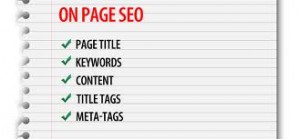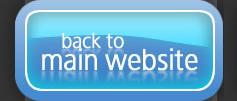 A week ago I posted an article- “Internet Marketing 101”, where I briefly mentioned Search Engine Optimisation (SEO) and why it is so important. I want to talk more about it and how you can start optimising your website. Well to start off, there are two parts of SEO- On- Page Optimisation (which I will be taking about today) and Off-Page Optimisation (which I will be discussing next week). Off-Page optimisation accounts for around 70% of your overall SEO, while On-Page accounts only for 30%. But if you want to do well, the 30% is very important; so if you have decided to optimise your site or just created a new one, make sure that your website is of good standards and start with On-Page Optimisation. There are two main things that need to be optimised on your site- Meta Tags and your Content.
A week ago I posted an article- “Internet Marketing 101”, where I briefly mentioned Search Engine Optimisation (SEO) and why it is so important. I want to talk more about it and how you can start optimising your website. Well to start off, there are two parts of SEO- On- Page Optimisation (which I will be taking about today) and Off-Page Optimisation (which I will be discussing next week). Off-Page optimisation accounts for around 70% of your overall SEO, while On-Page accounts only for 30%. But if you want to do well, the 30% is very important; so if you have decided to optimise your site or just created a new one, make sure that your website is of good standards and start with On-Page Optimisation. There are two main things that need to be optimised on your site- Meta Tags and your Content.
1. First of all Meta Tags are codes in your HTML that can only be read by search engines and web spiders and are invisible to the visitors. They are very important because they are used as one of the main guidelines on how search engines will index your website. There are 3 main Meta Tags that you need to create and choose wisely:
A. Title Tag- is the text that appears at the top of the browser when you’re looking at a web page. It should be no longer than 65 characters and should include title of your page and 3-5 your most important keywords. Page Titles are most important information search engines use to index web pages.
B. Description Tag- is the couple sentences that you see about different websites, on the result pages of Google or other search engine sites when you search for something. These couple sentences are your opportunity to advertise your site’s content, so people would click on your link. While Meta Tag Descriptions aren’t as important for search engine rankings, they are extremely important when it comes to getting user click-through from search engine result pages. When creating these tags, you should write a compelling description including keywords smartly.
C. Keyword Tag- is located within the HTML of a web page. It should contain no more than 10 keywords that are most relevant to your website and content. Of course, you should take your time and do the required research when choosing your keywords. On how to target the right keywords see- David’s article “How to do Keyword Research”.
2. Finally you need to Optimise Content. It is very important that you have relevant Content on your website. Another thing that you need to consider is how many times do your keywords appear in your content and are the keywords emphasised- bolded? Here are the things that you need to consider/change on your various web pages:
A. Headings- should contain target key phrases and have bigger font size than the one in the body text.
B. Keywords- you need to have them in you content and they should be bolded. But you need to avoid keyword stuffing. So if your adding content to your page, ad keywords smartly and in no means overstuff!
C. Hyperlinks- can we be words or images that reference to a document or another page, that the reader can follow. But not only readers follow those links, search engines and web spiders follow them too, and they help in your overall search engine optimisation. Your anchor text should be mostly your keywords that would lead to relevant pages. And you should have a few hyperlinks per page.
I know that all of this stuff can be confusing and you might not have the skills to do that yourself, but by understanding this, you can go to a web designer and tell him/her what you exactly want to be done for your website.












This atcrile went ahead and made my day.